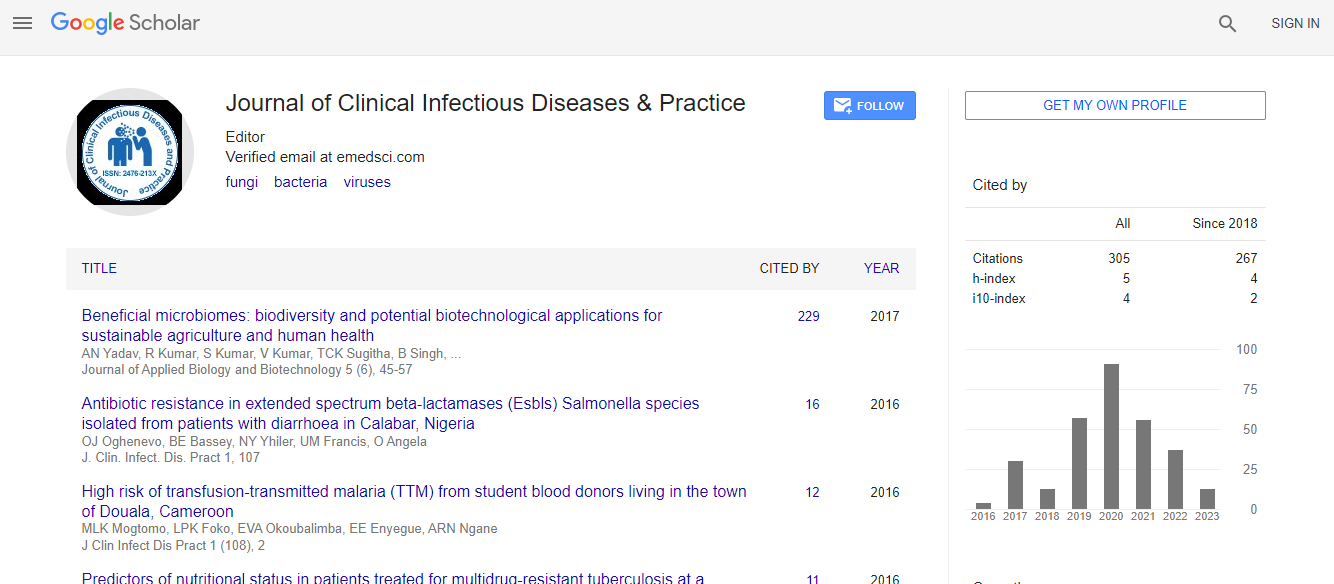Complications and Long-Term Effects of Chickenpox: Varicella-Zoster Virus
*Corresponding Author:Received Date: May 01, 2024 / Published Date: May 29, 2024
Citation: Peletie C (2024) Complications and Long-Term Effects of Chickenpox: Varicella-Zoster Virus. J Clin Infect Dis Pract 9: 244.DOI: 10.4172/2476-213X.1000244
Copyright: © 2024 Peletie C. This is an open-access article distributed under the terms of the Creative Commons Attribution License, which permits unrestricted use, distribution, and reproduction in any medium, provided the original author and source are credited.
Abstract
Chickenpox, an infectious disease instigated by the varicella-zoster virus, spreads rapidly among children due to its highly contagious nature. This article delves into a thorough analysis of chickenpox, encompassing its epidemiological patterns, diverse clinical manifestations, diagnostic approaches, available treatment modalities, and preventive measures. Epidemiologically, chickenpox often manifests in outbreaks within communities, schools, and day-care settings, underscoring the necessity for robust prevention strategies. Clinically, its hallmark presentation includes the development of characteristic itchy blisters across the body, with potential complications ranging from bacterial skin infections to more severe outcomes like pneumonia and encephalitis. Diagnosis typically relies on clinical evaluation, although laboratory tests may supplement in certain cases. Treatment primarily involves symptom management, while vaccination stands as a pivotal preventive measure against this ubiquitous childhood illness. By comprehensively exploring these facets, this article aims to provide a comprehensive understanding of chickenpox and its implications for public health.

 Spanish
Spanish  Chinese
Chinese  Russian
Russian  German
German  French
French  Japanese
Japanese  Portuguese
Portuguese  Hindi
Hindi 
